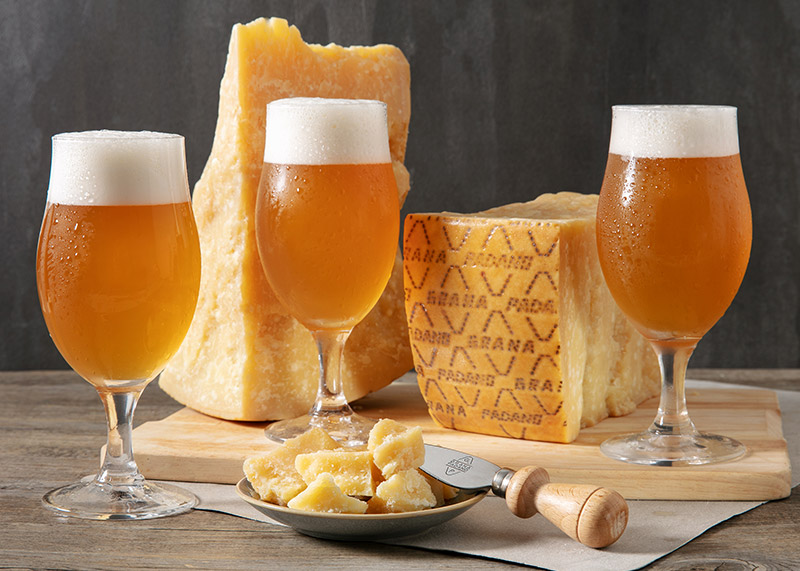
Belgian Blonde Ale

The name is a clear indication of its geographical origin: starting from the lands on the border between Wallonia and Flanders, however, this type of beer has been emulated everywhere, finding favour with producers and consumers in all the most far-flung corners of the international scene.
– Storage: As a high fermentation beer it does not need to be kept refrigerated but storage temperatures must not exceed 18-20°C. Beyond this (unless it is pasteurised) a new fermentation may begin in the bottle with unpleasant consequences.
– Serving temperature: from 10 to 12°C in a goblet with a wide bowl. Initially the glass must be tilted 45° and then straightened up to favour the formation of a good head of foam.
We recommend checking the bottom of the bottle carefully: versions that are not fully filtered may contain sediments, given the presence of yeasts. One option is to leave a centimetre of sediment in the bottle, rotate the bottle lengthways and serve the deposit in a separate glass, to appreciate the qualities provided by the yeasts.
– Alcohol by volume: 6-7.5% Vol.
Characteristics (visual, on the nose, in the mouth):
Its colour varies from pale to intense gold. It is generally clean in appearance with a considerable head of dense, compact, and long-lasting foam, frequently generating what is called ‘Belgian lace’ in the glass. It has an interesting nose, both intense and complex, containing hints of malt (quick bake cakes, blond caramel, honey), hops (floral, sometimes earthy), yeasts (ripe pale-fleshed fruit, citrus such as oranges or lemons and spicy notes which can, for example, conjure up cloves). These aromas are mirrored in the mouth, confirming their complexity and quality. this same structure is grafted onto a medium body (shored up by a generally high carbonation) producing a lean finish, without accentuating the bitter sensations balanced by the predominant alcoholic and sugary softness. As far as the alcohol level is concerned, this medium-strong style is best drunk in the middle of a meal.
Its structural density and complex aromas and flavours complement the characteristics of mature Grana Padano aged from 16 to 20 months. Specifically, its robust alcohol levels and carbonation work on the fattiness and its malty sweetness on the saltiness of the cheese, balancing them to perfection. Some of the more alcoholic beers (the choice is always the producer’s) may prompt some pairing asymmetries but, in general these work very well indeed.
Curious facts
This type of beer is a relatively recent invention (early 20th century), the result of attempts by Belgian brewers – who usually made high fermentation beers – to respond to the growing popularity of the Central European pils.
